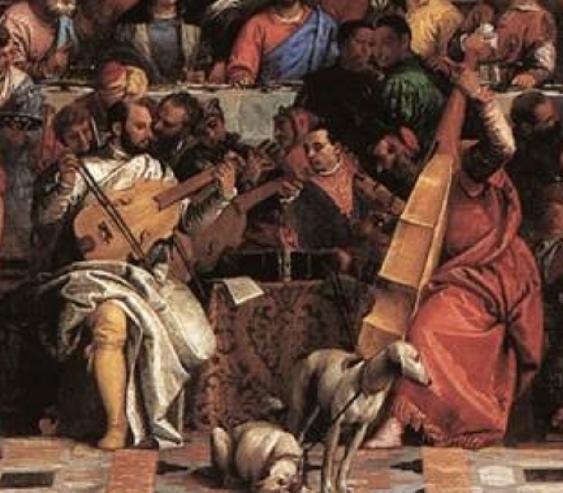A rebec from the 13th century I was in charge in a college of an extra-curricular activity for some students, concerning the construction of musical instruments, and one student having left, I undertook to finish his rebec for myself. I had established the plan after the big statue of a musician apostle from a gothic cathedral. The dimensions were calculated in relation to the size of the statue (which was very tall), but took account of the artistic rubato used by the sculptor. |
||
A harp from the begining of the 15th century. The plans were established after two colored drawings of the time. I used maple, even a piece of bent branch (where the pegs are), to give a better resistance, keeping the wood fibers intact). The table of course is in spruce, and the sculpted parts are in wild cherry… the small decorating rings are in silver |
||
Big bowed hurdy-gurdy from the 13th century. It was constructed after some drawings of the time. This was one of the main instruments used by the travelling singers (trouveres, troubadours, minstrels, contere , minnesinger, whatever name one is giving to them). It was learning on how to play this instrument that I realized the reason why, on all pictures, the players were presented holding those instruments horizontally flat accross the chest, and the head on the side of it… a position that always looked crazy to me!… I've learned since, never to have any doubts about the perfect and exact representation by the old painters from the past, of every detail on what they painted… The only way to play this instrument is to hold it this way, it's to big to do anything else!… even to tune it, the hand couldn't get otherwise to the pegs! The 5 strings are played together (since the bridge is flat, like the rebec), and it looked adequate to me (lacking more data) to tune it in a way similar to the Irish crwt: D-A-D-D-A, the second and third string D in unisson, the chantarelle being used to play the melody, and the others as drones. When the melody has to go lower than the open string A, one uses the fingers on the second string D, and then, the first string giving an open A fits perfectly with the drones. |
||
A smal bowed hurdy-gurdy after the painting from Memling "The angel-musicians" (15th century). |
||||
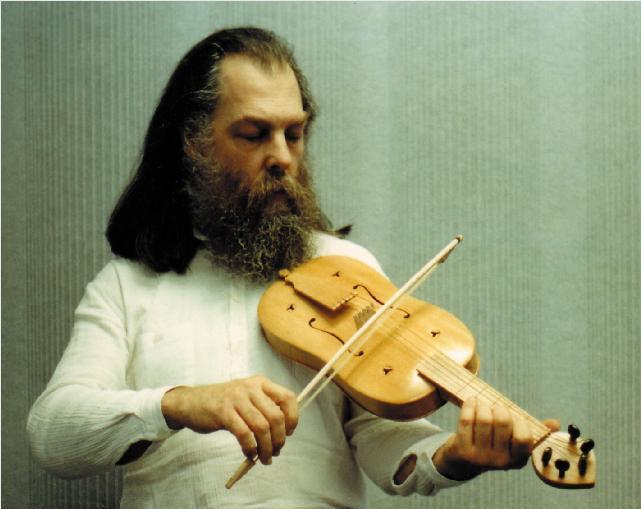 |
||||
Big italian 5 strings Bass viola da Gamba after Veronese (16th) That's it's name, but in fact, it is more a double-bass viola da gamba. The plans were established after the Veronese's painting "The Wedding at Cana" (Louvres). One can see in the foreground a group of musicians busy playing : flute, violin, two violas (seems to be an alto-viola and a tenor-viola) of a particularly intersting form, and then, this bass. For the dimensions, I used the height of the player's tibia (that's about the only thing not altered by perspective, being vertical, and also close to the instrument). But I also took care of the fact that today, the size of a human being is about 10% more than in those days. Of course, I had to deduce the form of the instrument from the shading, since it had been painted in profile… but I believe it was clear enough. The small rosette in front of the fingerboard is of course not visible on the painting, but it was very usual at the time on that place for this type of instruments, and I thought it would add something. The same applies to the form of the ƒ, for which I used a form found on few other basses, and that seemed to be convenient for this instrument. |
||
 |
||||
Example of the sound of this bass: A pavane of the Renaissance, on the song "Belle qui tiens ma vie", played here with 3 Renaissance fiddles, recorder, this bass and drums. |
||||
The next picture represents this bass viewed from another angle, closer to the one under which Veronese painted it. Note the curious heel of the neck, but it is neither by chance nor esthetic… to follow the form of the rib, the back has to curve itself (it has to be forced), and this is a way to give to it more strength in its elasticity, in so reinforcing the system back/ribs, used to dynamise the vibrating table. But, since the back is only glued, that heel of the neck, applied on the top of it, comes to reinforce it, and so is a security against unglueing. Two amusing anecdotes: 1) Busy noting with a dry point compass all the exact dimensions given by Veronese on his painting to the different parts of the instrument, I amused myself, almost as a joke, to also note the distance between those strings, rolled up across the fingerboard and used to define the intonation (like on a luth or guitar), and, the instrument finished, when busy doing the last adjustments, I placed those strings exactly as they were on the painting (they can be moved up and down anyway), just to see… Well, when played in this condition, the notes were in tune!… and this by the way has a significance: Veronese (like every painter of the past) went to the tiniest detail up to the point of being true to the reality… photography didn't exist then, so it had to be as faithful as possible. 2) To varnish this instrument, I used the recipe (with benzoin) from an old italian violin maker from 1564… And the result was this colour that I rather like : a sort of light honey colour. Of course, the colour has no importance whatsoever for an instrument, except for its look and esthetic, and I was more concerned with the resulting sound (that has not much to do with the varnish!! sorry for the fetishists). Anyway, the colour I had was rather different from the one of the painting, that was much darker, more in the brown category… strangely, and this was a huge coincidence, I received a few weeks later, a leaflet coming from le Louvre (dunno why, I had never communicated with them!) announcing that the painting had just been restored, cleaned up and so on… and to my surprise, on the resulting picture, the bass was now exactly of the same colour as mine! About this work of restoration, that I find extremely interesting (insofar as this search, from another domain than mine is very much the same by the Sherlock Holmes way of conducting it), and if you'd like some more details about it, please click HERE (not yet translated). |
||
Détail from the Veronese painting (Musée du Louvre) |
||

Some pictures of the reconstitution of ancient instruments
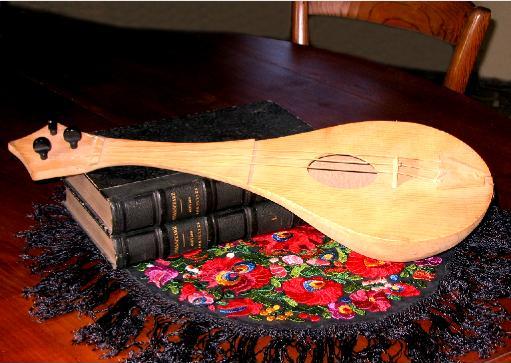
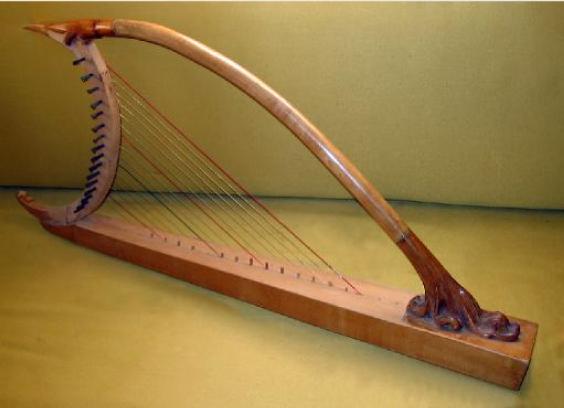
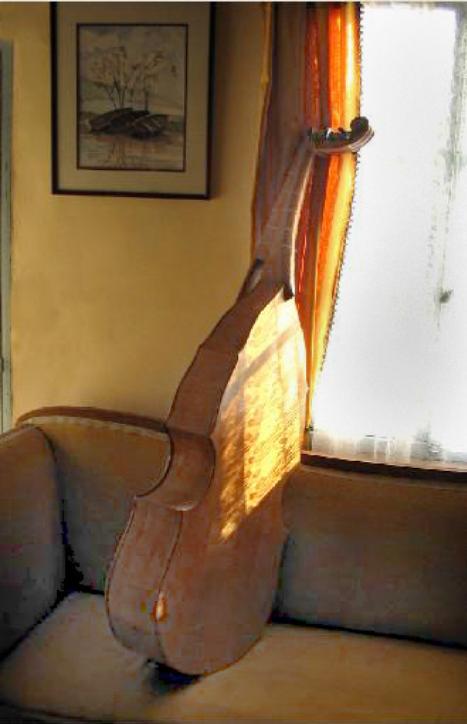
Dulce Solum. Voice, hurdy-gurdys played with bow and in pizzicati, small cymbal
